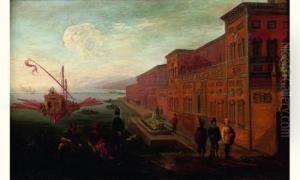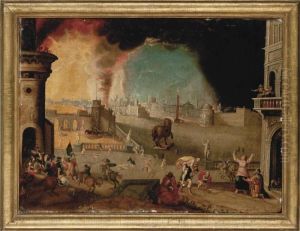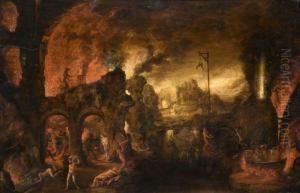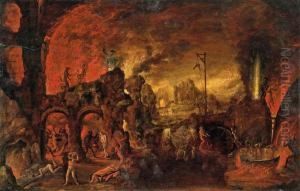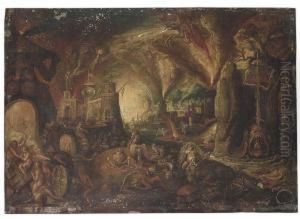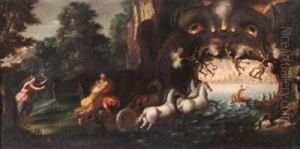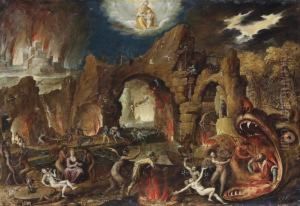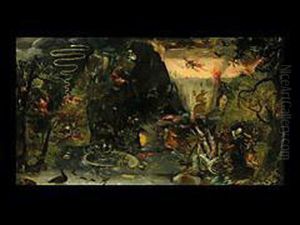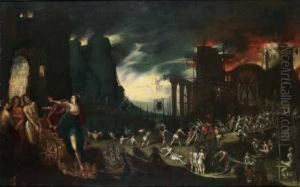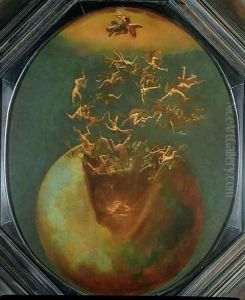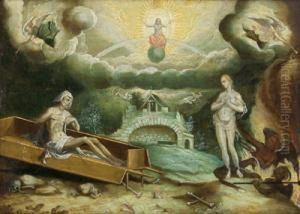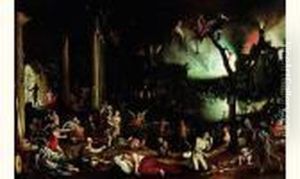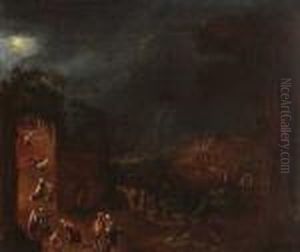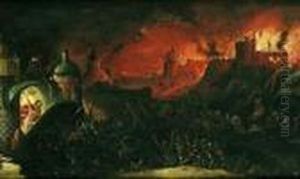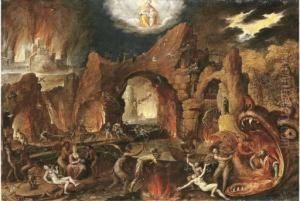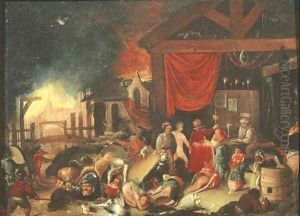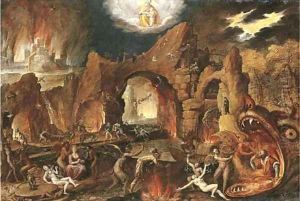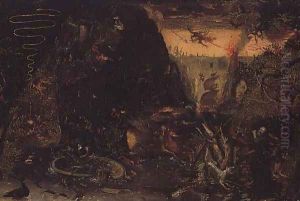Jakob Isaaksz Swanenburgh Paintings
Jakob Isaakszoon van Swanenburgh was a Dutch painter born in 1571 in Leiden, Netherlands. He was known for his work in various genres, including history painting, landscapes, and particularly for his depictions of hell and its demons, a theme that was quite popular during the late Renaissance and early Baroque periods. Jakob was part of a significant artistic family; his father, Isaac Claesz van Swanenburg, was also a painter and local government official, and he had two brothers who were painters as well. This familial environment immersed Jakob in the world of art from a young age, providing him with the training and connections needed to develop his career.
Jakob's education in art took a significant leap forward with his travels to Italy, a common practice among artists of his time seeking to study the works of the Renaissance masters firsthand. He spent a considerable amount of time in Venice, Rome, and Naples, absorbing the Italian influence, which would later be visible in his works. After his return to Leiden in the early 1600s, Jakob established himself as a successful artist and teacher. Among his most notable students was Rembrandt van Rijn, one of the most famous Dutch painters of all time. Rembrandt's early work shows the influence of Jakob's teaching, especially in the use of dramatic lighting and choice of subjects.
Throughout his career, Jakob van Swanenburgh contributed significantly to the cultural and artistic life of Leiden. He was involved in the city's guild of Saint Luke, a common association for artists of the time, and held the position of headman multiple times. His works, especially his imaginative depictions of hell, were well-regarded for their detailed and dramatic compositions, showcasing his mastery of color and light. Despite his talent and contribution to Dutch art, Jakob's legacy was somewhat overshadowed by the towering figure of his student, Rembrandt. Nonetheless, his paintings remain an important part of the study of Dutch art in the early 17th century.
Jakob Isaakszoon van Swanenburgh passed away in 1638 in Leiden. His work continued to be appreciated by art connoisseurs and historians, who recognize him not only for his role in shaping Rembrandt's early style but also for his contributions to the Dutch Golden Age of painting. His surviving works, while not as numerous as those of some of his contemporaries, provide valuable insights into the artistic trends and cultural context of his time.
